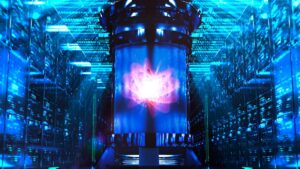POWER UP: Europe’s going nuclear, will Australia follow suit?

Pic: DanielPrudek via iStock/ Getty Images Plus
Decisions such as the European Union’s – admittedly tight – vote last week to oppose a motion blocking its gas and nuclear proposals, are awe-inspiring in their ability to provoke angst and good cheer.
The joint body’s proposal will rather controversially class both gas and nuclear power plants as being ‘green’, a move that will open up billions of euros in cheap loans and state subsidies.
While dissension within the ranks is clearly strong – as highlighted by just 329 lawmakers out of a total of 639 lawmakers voting to oppose the blocking motion – the EU’s decision clearly stems from the desire to secure energy supplies and reduce its dependence on Russian gas.
Greenpeace rather predictably lamented the decision with its European chapter saying that the decision was an outrageous one that will keep money flowing into Russia’s war chest.
An outrageous outcome to label gas and nuclear as green in the #EUTaxonomy and keep more money flowing to Putin’s war chest, but now we will fight this in the courts#NotMyTaxonomyhttps://t.co/v9j1IWIE9p
— Greenpeace EU (@GreenpeaceEU) July 6, 2022
Their counterparts in favour of nuclear energy were also quick to cheer the decision while uranium companies cheered at the prospect of improving market conditions for the energy metal.
However, the real question is whether a similar decision – particularly for nuclear given that gas already has an entrenched position – could ever be made in Australia.
The case for nuclear energy
Nuclear energy has many advantages compared to fossil fuels and renewable energy.
Like fossil fuels, nuclear is a baseload source of power that short of scheduled maintenance can keep power going rain or shine – though extreme heatwaves are apparently a bad thing too if the recent French experience is anything to go by.
However, splitting uranium atoms to generate power has a distinct advantage over coal, gas and oil, and that’s a complete lack of carbon emissions (or escaping methane).
Ah, say the detractors, what about disasters such as Chernobyl, Three Mile Island and Fukushima? Aren’t nuclear reactors dangerous?
The short answer is no. At least, not the modern third generation reactors, which are designed to be safer, more fuel efficient and often modular.
The earliest of these have been in operation since 1996 and it’s worth noting that all the major incidents to date have involved earlier generations.
And there are newer models coming.
Fourth generation designs such as high-temperature gas-cooled and molten salt reactors are poised to leap off the design board with even Microsoft founder Bill Gates getting in on the action through his company TerraPower, which is aiming to build a sodium fast reactor by 2028.
The only other issue – and the other major stumbling block – is their production of radioactive waste products and their disposal, though there are options to recycle the waste into more fuel. The fourth generation reactors are designed to generate waste that remain radioactive for much shorter periods of time than older reactors, making their disposal considerably easier.
This combination of factors appears to make nuclear energy a very viable option for the energy transition to net zero.
Overcast with a chance of meatballs
But what does it all mean for Australia?
While it wouldn’t do to completely discount the possibility that the new fourth generation reactors would finally get us over the line, the simple fact is that besides a lone research reactor at Lucas Heights, the debate over embracing the power source has been ongoing since the 1950s with nothing to show for it.
There have been many calls for its adoption but to date there simply hasn’t been enough political will or too much opposition for it to make much headway.
As much as fourth generation reactors are safer, more efficient and less wasteful, it is hard to see how the strongly held opinions can change enough to make nuclear power possible.
Showers of meatballs are more likely at this point.
Related Topics

UNLOCK INSIGHTS
Discover the untold stories of emerging ASX stocks.
Daily news and expert analysis, it's free to subscribe.
By proceeding, you confirm you understand that we handle personal information in accordance with our Privacy Policy.








